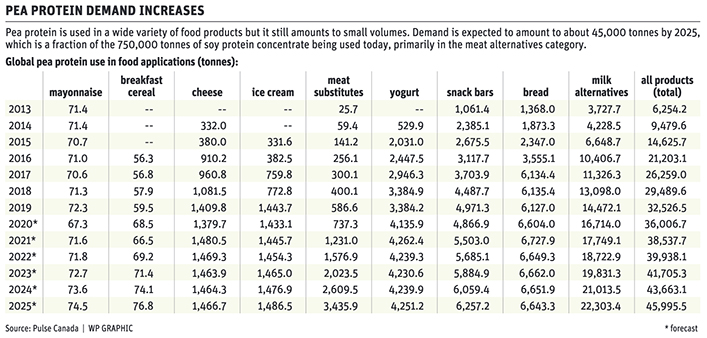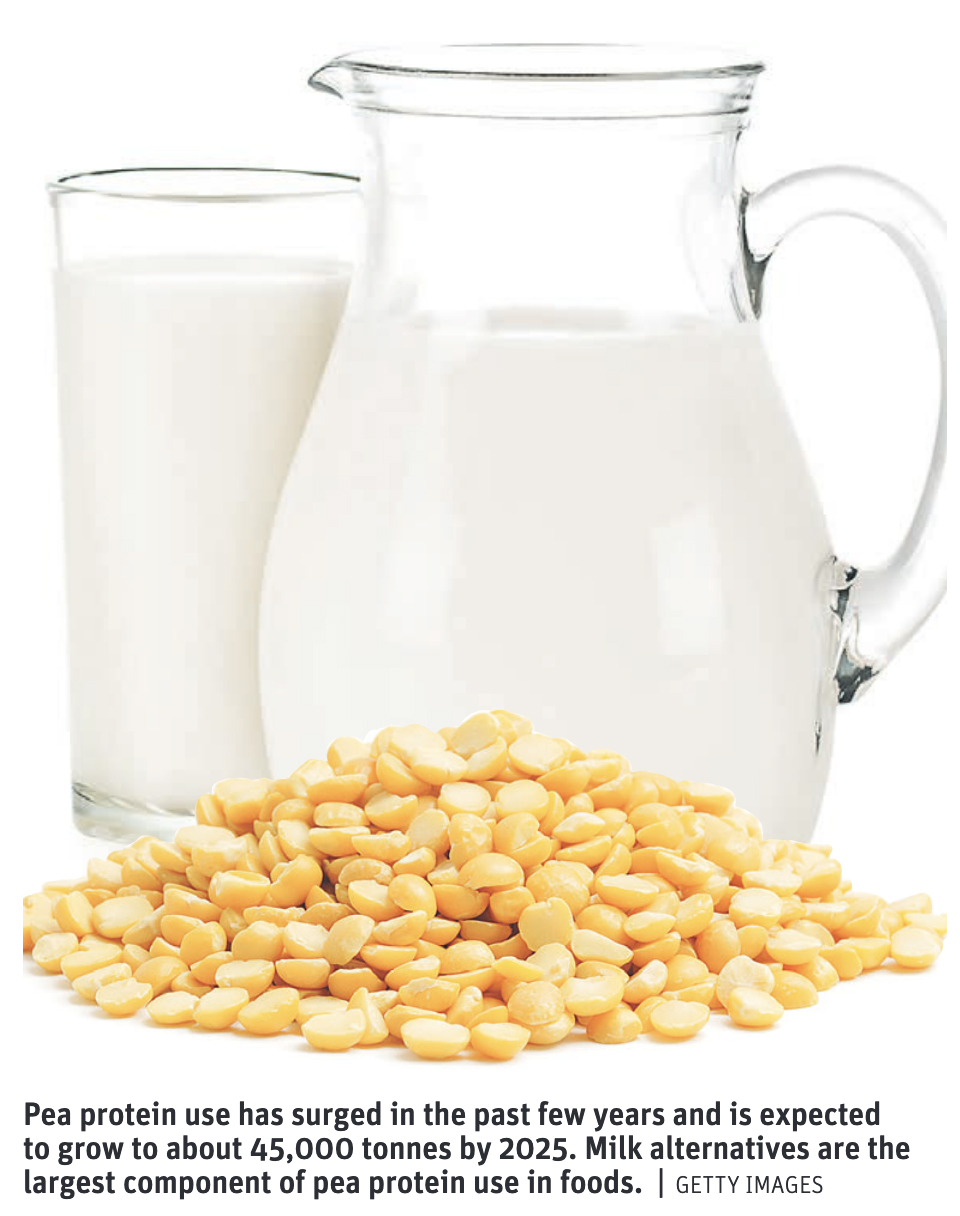Pulse producers see new opportunities for pea protein

Demand for pea protein is growing by leaps and bounds but the overall volume consumed is still pretty small.
Pea protein is finding its way into milk alternatives, bread, snack bars, yoghurt, meat substitutes, ice cream, cheese, breakfast cereals and other products.
“The forecasted volume use of pea protein across all these uses is only 45,000 tonnes by 2025,” said Julianne Curran, vice-president of market innovation with Pulse Canada.
By comparison, about 750,000 tonnes of soy protein concentrate will be used this year, primarily in meat alternative products.
But with more pea fractionation plants opening across North America, there is a big opportunity to increase market share in the plant alternative sector.
It is a similar situation with other pulse ingredients.
An estimated 230,175 tonnes of pulse flour was used in American packaged food and pet food markets in 2020, which represents two percent of total flour use in that market.
That pales in comparison to the 13 million tonnes of wheat flour consumed in the United States, which amounts to an 82 percent share of the market.
But food companies are starting to formulate away from wheat flour, which means there is a big opportunity for pulse flours.
Market analysts expect pulse flour sales to grow at a clip of 20 percent per year compared to one percent for wheat flour over the next couple years.
Food manufacturers say one thing holding back pulse ingredients is the lack of standards.
There are CODEX standards in place for soy protein flour, soy protein concentrate and soy protein isolate.
“Pea protein doesn’t have any such standards,” Curran told delegates attending a recent Global Pulse Confederation webinar.

Standards for wheat flour have been established by Canada’s Food and Drug Regulations and the U.S. Code of Federal Regulations.
“We don’t have any such standards for pulse flours that are used in food applications,” she said.
The result is a confusing array of pulse ingredients with different properties and names.
A product carrying a label saying it contains black bean flour might actual be a mix of black bean and soy protein, while another product claiming to have pea flour could actually contain chickpea flour.
Pulse Canada spoke to processors who said it is time to develop common definitions for pulse ingredients.

In response, Pulse Canada helped create the International Pulse Ingredient Consortium, which has created definitions for flours, modified flours, protein, fibre, starch, grits and meal.
Those definitions will be finalized and published after consultations with stakeholders in October.
A website is expected to be launched before the end of 2021.
After that, it will be the job of the consortium to endorse or certify pulse ingredients so manufacturers have a better idea of what they are buying.
“This is the next chapter on global industry collaboration to build growth in pulse ingredient use around the world,” said Curran.
Source: producer.com

